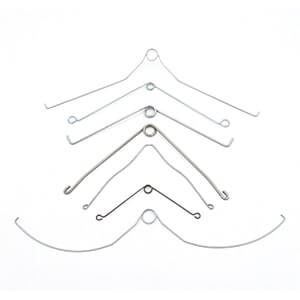Get unique, complex parts easily. No matter your requirements, Chaoyi Spring creates hard-to-produce coil springs and wire forms.
Let us help you create the custom wire form you need, from S-hooks and J-hooks to utility hooks and more.
We work closely with customers across a wide range of industries, helping them design and manufacture made-to-order parts.
Why choose Chaoyi Spring? We prioritize customer-focused collaboration, modern equipment and the latest technology to make your parts per print.
Find the information and guidance you need, from measuring a spring to learning about materials, placing an order and much more.
Springs, those ubiquitous coils of metal, are marvels of engineering, storing and releasing energy with remarkable efficiency. Their ability to compress and extend forms the basis of countless applications, from


Springs, those ubiquitous coils of metal, are marvels of engineering, storing and releasing energy with remarkable efficiency. Their ability to compress and extend forms the basis of countless applications, from car suspensions to door hinges. But how do we determine the maximum compression a spring can handle before it succumbs to deformation or even failure? This exploration delves into the factors influencing spring compression, outlining methods to find that critical point and ensure reliable performance.

Imagine a spring, a coil of wire, initially at its natural length. When we push on it, it compresses, storing potential energy. The amount of compression depends on the applied force and the spring's stiffness, a property called the spring constant. This constant reflects how much force is required to compress the spring by a unit length. A stiff spring requires more force for the same compression, while a flexible spring compresses easily.
The maximum compression a spring can withstand before experiencing permanent deformation, called yielding, is governed by several key factors:
There are a couple of common methods to determine the maximum compression a spring can handle safely:
The most straightforward approach involves conducting a compression test. You apply increasing loads to the spring and observe its behavior. The point at which the spring exhibits permanent deformation (yielding) marks the maximum compression limit. This method is accurate but can be time-consuming and potentially destructive if you push the spring beyond its limits.
Using a combination of physics and engineering formulas, you can estimate the maximum compression. The key equation involves the spring constant (k), the applied force (F), and the compression (x):
F = kx
By rearranging this formula, we can solve for the maximum compression (x) given the spring constant (k) and the yield strength of the material (F):
x = F/k
However, this approach relies on accurate knowledge of the spring's properties and assumes a simplified model. Real-world factors like material variations and complex loading conditions can influence the result.
Knowing the maximum compression a spring can handle is crucial for several reasons:
It's crucial to never exceed the maximum compression limit of a spring. This is particularly important in applications where failure can have severe consequences. Always consider a safety factor, a margin of error that ensures the spring is not stressed beyond its limits. For instance, a safety factor of 1.5 implies that the design load should be no more than 66% of the spring's maximum compression limit.
Finding the maximum compression a spring can handle is a critical step in designing safe and reliable systems. By understanding the factors influencing compression and employing appropriate testing or calculation methods, engineers can ensure springs perform their intended functions without succumbing to premature failure. Whether it's cushioning the impact in a car suspension or providing the precise force in a door hinge, the ability to leverage spring compression to its full potential lies in knowing its limits.
In essence, understanding maximum compression allows us to unlock the full potential of springs, leveraging their energy-storing capabilities safely and effectively. It's a crucial consideration for designers, ensuring that these ubiquitous coils continue to play their vital roles in countless applications.
Browse some of the custom wire forms and springs that we manufacture. Don’t see what you need? We specialize in made-to-order products that meet your application requirements.
Visit Our GalleryNeed a custom wire form or coil spring? We make it work. Fill out the contact form and a representative will respond within 1 business day. If you have a PDF or CAD file, you can submit to request a quote.